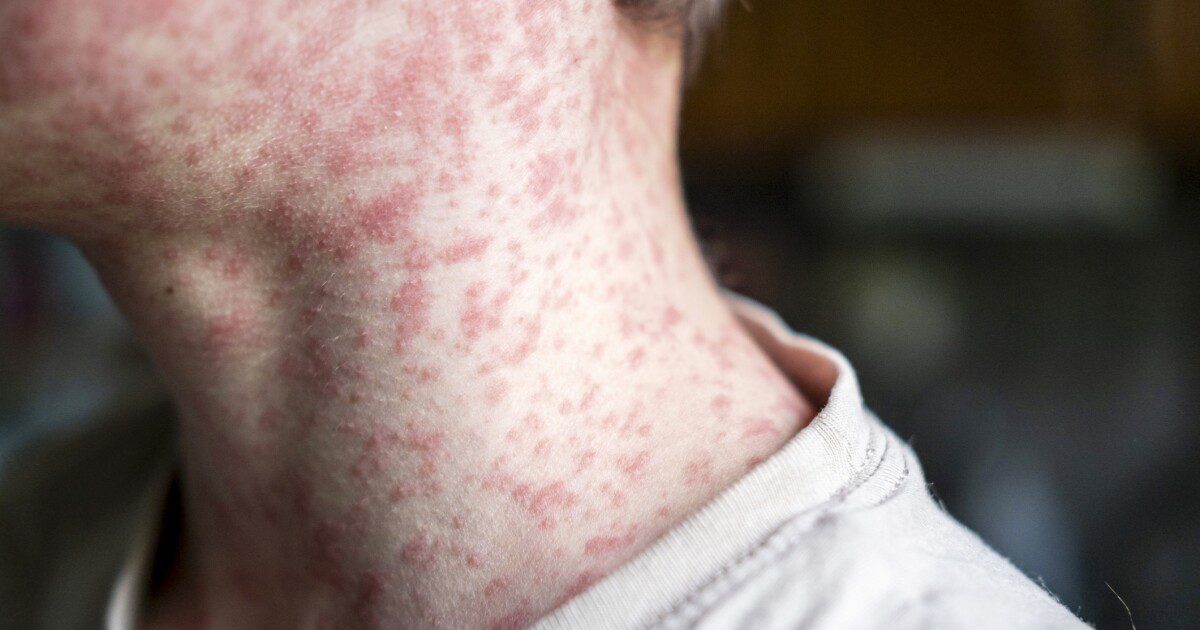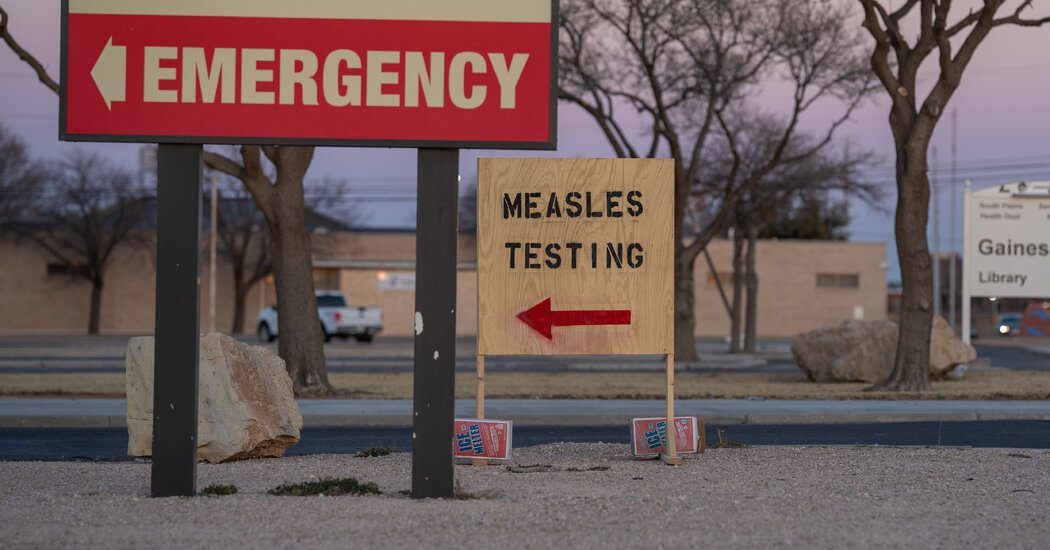
Join the community by signing up for TPR Today, the newsletter from Texas Public Radio that delivers our top stories straight to your inbox every morning.
The Texas Department of State Health Services has reported the largest measles outbreak in decades, now affecting San Antonio and San Marcos.
An individual diagnosed with the virus in West Texas visited two prominent universities and one of the country’s most popular tourist spots—the San Antonio River Walk.
Significant Dates:
- Friday, February 14:
Texas State University in San Marcos from approximately 3 p.m. to 7 p.m. - Twin Peaks restaurant in San Marcos from 6 p.m. to 10 p.m.
Saturday, February 15:
- The University of Texas at San Antonio Main Campus between 10 a.m. and 2 p.m.
- Attractions along the San Antonio River Walk—including the Wax Museum, Ripley’s Believe It or Not, and Ripley’s Illusion Lab—from 2:30 p.m. to 5:30 p.m.
- Mr. Crabby’s Seafood and Bar in Live Oak from 6 p.m. to 8 p.m.
Health officials advise that anyone present at these locations during the specified times, or within two hours afterward, should be vigilant for symptoms.
This individual is a resident of Gaines County, the epicenter of a measles outbreak that has resulted in at least 90 confirmed cases, marking the most severe outbreak in 30 years.
According to state health data, Gaines County has the highest rate of unvaccinated children in Texas, with 18 percent of students not up to date on vaccines this school year.
“Measles is an extremely contagious virus that can lead to severe health complications, particularly in young children and those with compromised immune systems. If you believe you’ve been exposed or are showing symptoms, please reach out to your healthcare provider immediately,” stated Dr. Anita Kurian, Deputy Director at the San Antonio Metropolitan Health District.
Measles was declared eradicated in the United States in 2000 due to effective vaccination efforts that maintained high immunity levels across the population.
“Unvaccinated individuals are at a significantly higher risk of contracting the virus. We strongly encourage everyone to check their vaccination status and ensure they are current on their vaccinations to protect themselves and their community,” emphasized Dr. Kurian.
“Community protection against measles begins with being informed and taking appropriate steps,” she added. “We advise everyone to review their vaccination status and seek medical guidance if they believe they may have been exposed. Prompt detection and vaccination are essential to curbing the spread of this preventable disease.”
Public health officials recommend the following steps for those who might have been exposed:
- Check your immunization and medical records to confirm your protection against measles. Those who have not contracted measles or received the MMR (measles, mumps, rubella) vaccine may not be protected and should consult a healthcare provider for vaccination.
- Contact your healthcare provider if you are pregnant, have an infant, or possess a weakened immune system, regardless of your vaccination history.
- Be alert for symptoms such as fever or an unexplained rash appearing 4 to 21 days after exposure.
- If symptoms arise, remain at home, and refrain from attending school, work, or large gatherings. Contact a healthcare provider immediately. Avoid entering a healthcare facility without prior notification of your measles exposure and symptoms to prevent risking infection to other patients.
Dr. Peter Hotez highlights that the conditions that allowed the eradication of measles in the U.S. in 2000 have shifted as vaccination rates decline, leading to potential future outbreaks of various vaccine-preventable diseases.
Understanding Measles
Measles spreads easily through the air when an infected person breathes, talks, coughs, or sneezes. The virus can linger in the air and remain on surfaces for up to two hours after an infected person has left. Those infected can transmit the virus up to four days before a rash appears and continue spreading it for four days after the rash shows up. If others inhale the contaminated air or touch infected surfaces and then touch their eyes, noses, or mouths, they can become infected.
Common Symptoms of Measles Include:
- High fever (reaching as high as 105°F)
- Cough
- Runny nose
- Red and watery eyes
- Tiny white spots that may develop inside the mouth 2-3 days after symptoms appear
- Rash approximately 3-5 days after the onset of other symptoms, typically starting on the face and spreading down the body
Measles can be prevented through the MMR (measles, mumps, and rubella) vaccine or the MMRV (which includes varicella, or chickenpox). These vaccines are administered in two doses, and their effectiveness is high: two doses provide 97% protection against measles, while one dose offers 93% protection. Maintaining a community vaccination coverage of 95% or more for two doses is essential to preventing outbreaks. For further information on measles, please visit this website.









